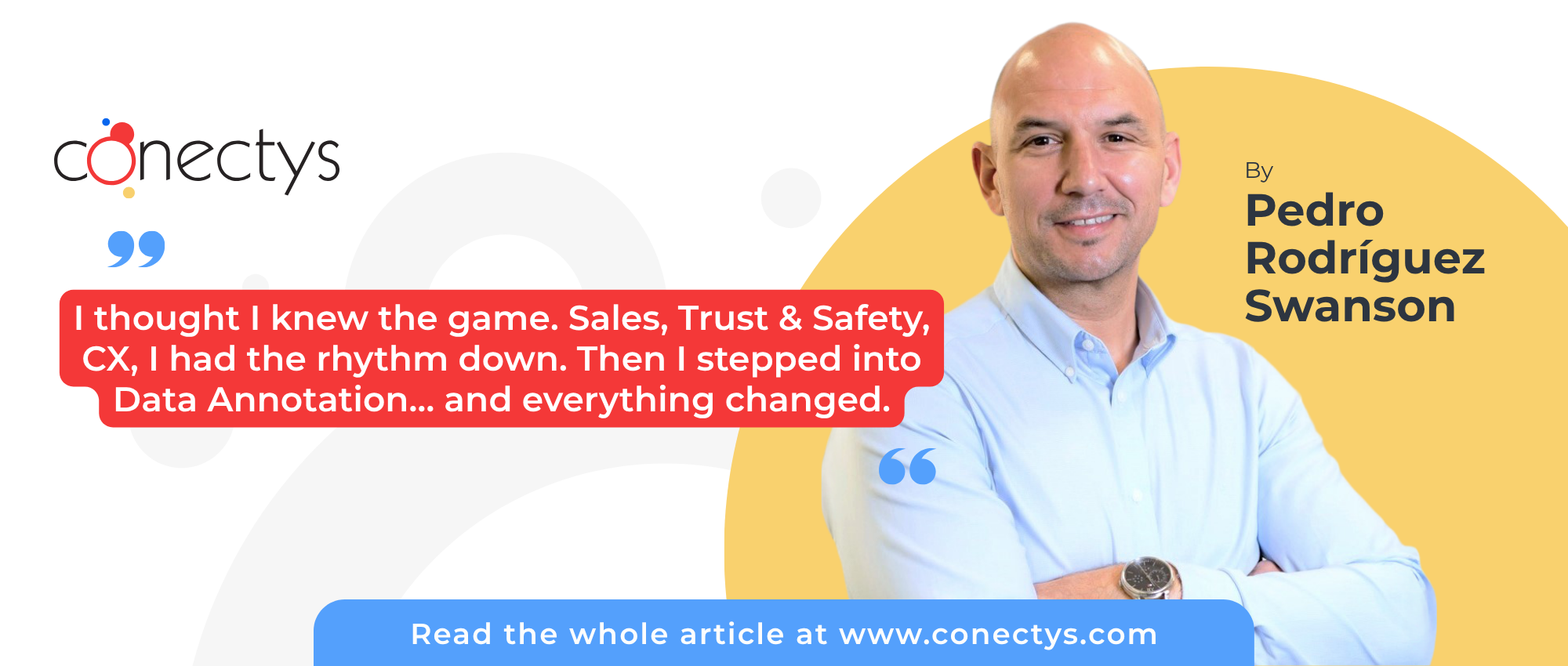Introduction
Peak season in customer support presents significant business challenges due to high consumer activity, frequent interactions, and a surge in service requests. Holidays, promotions, important events, and fluctuations in demand drive this phenomenon, placing considerable pressure on entire organisations to manage the chaotic influx of work, maintain quality levels, and ensure operational stability. To effectively navigate peak seasons, companies must focus on several key strategies, including correct forecasting, appropriate resource allocation and scalability of operations.
What is in-game moderation?
In-game moderation is an initiative that empowers gaming providers to create a safe and welcoming digital environment where players feel comfortable, engaged and motivated to come back for more outstanding experiences and ongoing adventures. Moderation allows gaming platforms to foster a sense of community, encourage positive interactions and promote fair play efficiently. At the heart of the initiative lies the prompt resolution of any issues that arise, a crucial element that guarantees the gaming community remains inclusive, enjoyable, and free from harassment or toxicity.
In-game moderation, alongside great UX, seamless functionality, immersive experiences, and enticing loyalty programs, is crucial in fostering loyalty and a sense of belonging among gaming enthusiasts. This is evident in statistics, such as those from Unity’s study, where 67% of surveyed players expressed a likelihood of discontinuing multiplayer video games upon encountering toxic behaviour. Therefore, companies aspiring for success and dominance in gaming must prioritise implementing relevant moderation tools and policies, as well as allocate resources to monitor and mitigate threats that violate the game’s terms of service, compromise player security, disobey ethical guidelines, or breach legal standards.

Given the gaming industry’s thriving business sector, annually generating billions of dollars in revenue and engaging millions of active players, the moderating initiative pays off – the more advanced, the better. The statistics underscore the sheer scale of the gaming community’s impact, with over 3 billion active video gamers worldwide, representing approximately 40% of the global population, according to Exploding Topics. In terms of income, PWC predicts the continuation of the industry’s rapid growth, up to 321 billion U.S. dollars by 2026.
How does in-game moderation work in practice? It involves monitoring, screening, and removing inappropriate content to safeguard individuals and communities from offensive or illegal material commonly shared during gameplay. The content requiring moderation varies based on the gaming platform’s terms of service, operational jurisdiction, and target age group.
Various approaches exist to efficiently moderate content in line with specific requirements, policies and user demographics. They encompass automated tools, real-time monitoring, community reporting systems, and dedicated human moderation teams. It’s crucial to highlight that a singular moderation method may be insufficient to address all threats effectively. Combining diverse methods becomes often necessary in gaming, mainly when dealing with a dynamic online environment generating a high content volume. A multifaceted moderation approach should encompass two types of moderation: a proactive strategy involving screening content before publication, using human moderators alongside filters and algorithms, and a reactive approach that includes reviewing content after publication. This includes manual review, user reporting systems, community guidelines, and real-time tools.
In gaming, organising and overseeing user-driven moderation is also crucial. This empowers players to actively engage in reporting, flagging, or rating content, fostering a sense of value and contributing to safety. Such initiative serves as a vital element for quality control and content curation. This democratic approach lets the majority influence the prominence of featured information and materials aligned with their expectations and preferences.
What are the types of gaming content?
Along with the increased number of games available and the growing community of enthusiastic players worldwide, many types of gaming content have arisen, catering to diverse interests and preferences. Consequently, users can publish and share a wide variety of self-generated content within games through tools like chats, forums, and dedicated platforms. This includes everything from gameplay videos, real-time broadcasting, strategy guides, and fan art to in-depth discussions about the game backstory and user-designed mods, fostering a vibrant and collaborative virtual culture.
Here are some common types of content that players often share in-game:

- Let’s Play Videos: Sharing individual or group gameplay recordings accompanied by vocal commentary.
- Live Streaming: Real-time broadcasting of gameplay, enriched with specific narration.
- Reviews: Publishing opinions, thoughts, suggestions and analysis of game features, graphics, and overall player experience.
- Guides: Providing self-made step-by-step instructions to help other users navigate levels, solve puzzles, and achieve objectives.
- Tutorials: Instructional content guiding players on specific game mechanics, strategies, or modding.
- Mods and Challenges: These are custom modifications to games or self-imposed challenges, adding variety and complexity from the users’ perspective.
- Updates: Information about the latest releases, updates, industry news, upcoming game releases and e-sport events.
- Game Development Diaries: Behind-the-scenes looks at the creation of video games provided by developers.
- Fan Art and Creativity: Artistic creations inspired by the game, including fan art, music covers, or other creative works related to the gaming experience.
Why do players share their content so commonly? It is their way of showcasing specific skills and accomplishments, fostering discussions, offering support, and becoming recognised and appreciated. Gamers can also express their unique perspectives, connect with like-minded individuals, and develop a sense of fellowship by publishing their materials or comments within games. In some cases, when done on a larger scale, such activity helps create strong connections, establish oneself as an influencer, and contribute positively to the gaming culture, paving the way for future personal brand benefits.
However, the player environment consists of different personas with diverse ethical values, approaches, cultural backgrounds, and social norm knowledge. This diversity makes it particularly vulnerable to cyber threats and harassment. Gamers also often interact anonymously or under fake accounts, making it difficult to track individuals breaking the rules, amplifying the challenges even more.
What are the signs of a toxic in-game environment?
While gaming offers exceptional entertainment, facilitates social interactions, provides relaxation, nurtures friendly rivalry and develops unique skills, it also comes with hidden risks. The dark side of gaming refers to potential dangers that can harm individual players, the entire community, and the reputation of brands.
A toxic in-game environment can be promptly recognised by players when they are increasingly exposed to various unpleasant or even traumatic experiences. Such threats include verbal abuse, hate speech, persistent harassment directed at specific users, discrimination on age, gender, ethnicity or sexual orientation, provocative behaviour, threatening, stalking, cheating, sabotaging, and other instances of harassment and misconduct. The importance of the issue is highlighted in various statistics, the alarming prevalence of illegal, unfair or offensive actions constantly arising. For instance:
49% of British female gamers asked by Sky Broadband & Guild Esports admitted being victims of abuse, rising to 75% among those aged 18-24.
(Source: Sky Broadband & Guild Esports)
62% of young gamers surveyed by ADL have experienced abuse and harassment while playing games online.
(Source: Anti-Defamation League; ADL)
70% of the gamers polled by PickFu & Utopia Analytics have been negatively affected by the behaviour of other gamers.
(Source: PickFu & Utopia Analytics)
It is worth emphasising that the previously welcoming atmosphere in online gaming can be disrupted by various factors, among which the most common potential sources are:

- Toxic Players: Individuals who engage in harassment, bullying, or offensive behaviour against other gamers, using diverse forms of negativity to impact the gaming experience and individuals’ peace of mind.
- Cheaters and Hackers: Players who use unauthorised methods to gain advantages, compromising the fairness and integrity of the game.
- Trolls: Disruptive individuals who intentionally provoke and upset others, often through inflammatory comments or actions.
- Unethical Players: Game participants who intentionally violate fair play, respect, and ethical conduct within the gaming community.
- Ineffective Moderation: The absence of proper tools, mechanisms, and human resources to report and address disruptive activity, illegal actions or conflicts, from basic issues to more comprehensive challenges. This allows disruptive behaviour to go unchecked and accessible to all gamers.
- Lack of Communication: Without the ability to communicate and collaborate, teamwork among players may result in frustration and dissatisfaction for players.
Regardless of the source or type of threat, they all lead to a generally diminishing and destructive environment where individuals no longer feel secure or satisfied. When not managed and addressed quickly, the consequences can extend beyond the virtual realm.
What are the risks associated with inappropriate in-game moderation handling?
Inadequate in-game moderation poses several risks for gaming providers, who should try to satisfy players and enhance their well-being, as it brings tangible benefits to the organisation. Let’s imagine what would happen if content moderation failed. Firstly, it would create conditions where users can freely publish what they want, offend others, and engage in disruptive behaviour, encouraging harassment and disrespect.
This unchecked hostile environment could lead to a toxic community culture, resulting in player disengagement, damage to reputation, legal consequences, potential lawsuits, loss of revenue, severed partnerships, termination of in-game ad sponsorships, erosion of trust, and community fragmentation. In extreme cases, it may even result in a spectacular market failure of the gaming platform. Players in an inadequately moderated gaming environment may face risks such as feeling isolated and upset, having severe psychological effects, engaging in poor behaviour towards others, and experiencing a decline in performance.
What are the advantages of effective content moderation in gaming?
Effective content moderation in gaming provides several advantages. It plays a crucial role in creating a welcoming space, free from harm, where individuals of diverse backgrounds, ages, genders, sexes, religions, ethnicities, nationalities, interests, or professions can engage in the gaming community for fun, enjoyment and socialisation.

In-game moderation helps to:
- Create safe and inviting spaces where players can freely interact, collaborate, and compete without facing harassment, hate speech, or inappropriate behaviour.
- Maintain the integrity of gaming environments, supporting fair engagement.
- Safeguard younger players from encountering inappropriate content, explicit language, or predatory actions, ensuring a secure gaming environment.
- Build thriving gaming communities where camaraderie flourishes, shared experiences are celebrated, and knowledge is exchanged.
- Ensure adherence to legal standards, mitigating potential risks that could harm the reputation of the gaming realm.
It is challenging for in-game moderators to ensure a safe and inclusive community by enforcing guidelines and filtering inappropriate content. Their work involves controlling in-game chats, screening user comments and reviews, and removing suspicious or bullying-initiating profiles. In addition, moderators actively enhance player experience and engagement, discouraging cheating, exploiting loopholes, and managing disruptive behaviour. They also contribute to community-building by organising events, tournaments, and discussion forums, facilitating player interactions. Their expertise allows them to provide assistance, tips, and strategies for skill development, contributing to overall game enjoyment. Moreover, gaming moderators are pivotal in promoting fair play and competitive integrity. They enforce rules against cheating, glitch exploitation, and unauthorised software use, actively monitoring user interactions for violations. Collaborating with developers and moderators helps maintain effective anti-cheat systems, ensuring a level playing field. This commitment to fairness fosters healthy competition, allowing players to showcase their skills without unfair advantages.
What is the role of AI and machine learning in in-game moderation?
Artificial intelligence and machine learning technologies are crucial in gaming content moderation. While AI involves creating systems capable of human-like tasks, machine learning focuses on enabling computers to learn and make data-based decisions. Leveraging these technologies, automated content scanning in real-time becomes possible, enabling the identification of inappropriate materials and faster responses to threats compared to traditional human moderation.
Although artificial intelligence brings immense opportunity for moderation enhancement beyond human capacities, such as automating processes, enhancing scalability, and greater accuracy, the human touch will remain invaluable and irreplaceable, providing empathy, cultural sensitivity, and a deep understanding of cultural nuances. The ability to interpret highly subtle sarcasm and humour and handle content that does not necessarily conform to predefined rules remains a distinct advantage of humans over AI. By integrating human skills with innovative solutions, one can craft a winning content moderation strategy that enhances the overall process’s effectiveness. This approach forms a well-balanced partnership meticulously tailored to address specific circumstances and challenges.

















